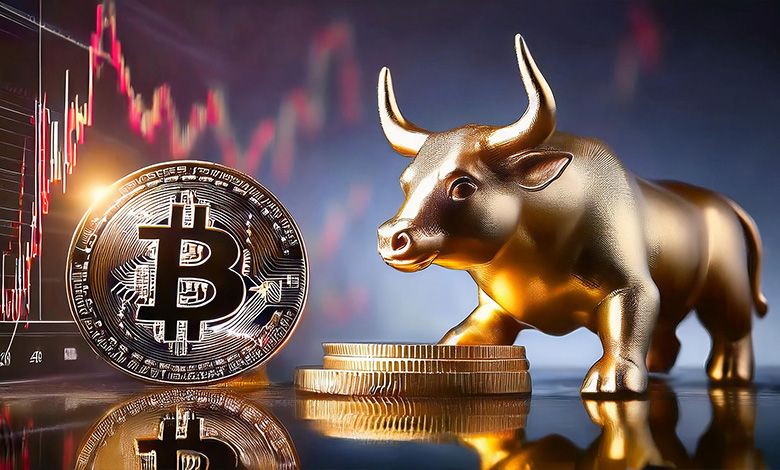Following a prolonged bear market in 2023, characterized by banking crises, regulatory crackdowns, and macroeconomic instability, the crypto market has rebounded strongly towards the end of 2024. Sygnum’s survey highlights a renewed wave of optimism among traditional financial institutions, driven by significant inflows into the market, the emergence of Bitcoin spot ETFs, and the rise of AI and Decentralised Physical Infrastructure Networks (DePIN).
The survey, released on Thursday, showed that institutions are poised to increase their investments in digital assets, with 57% planning to expand their cryptocurrency exposure, driven by a rising appetite for risk and long-term confidence in the asset class.
Adding to this optimistic outlook, the Crypto Fear & Greed Index recently reached a level of 84, placing it firmly in the “Extreme Greed” zone. This index, maintained by Alternative, reflects a surge in bullish sentiment and heightened demand for digital assets like Bitcoin. The climb to an 84 rating—up four points within 24 hours—underscores growing investor enthusiasm, indicating increased market participation. However, this spike also serves as a cautionary signal, as Extreme Greed can precede potential volatility or market corrections due to overenthusiasm.
Traditional Investors Embrace Crypto
Sygnum’s survey, which includes responses from single-family offices, hedge funds, trading firms, and private equity players, reveals that 72% of respondents are open to investing in crypto assets. Notably, traditional entities like external asset managers and fund managers are showing a higher level of openness compared to banks and insurance companies, which exhibit mixed sentiments.
Lucas Schweiger, Sygnum’s Digital Asset Research Manager, emphasized the increasing interest from traditional investors: “This report tells the story of progress and calculated risk, the use of a diverse set of strategies to leverage opportunities and most of all, the continued belief in the market’s long-term potential to reshape traditional financial markets.”
Growing Risk Appetite and Diversification Needs
The findings show a growing appetite for risk among traditional investors, with 79% planning to increase their crypto investments within a year. The desire to diversify traditional portfolios and hedge against macroeconomic uncertainty are key drivers behind this trend.
This growing appetite aligns with the surge in the Crypto Fear & Greed Index, as heightened enthusiasm among investors often translates into increased market activity. However, while high levels of optimism are encouraging, the Extreme Greed reading also suggests the potential for speculative behavior, where FOMO (fear of missing out) can drive impulsive investments, possibly leading to market volatility.
Key insights include:
- 91% of respondents invest in blockchain protocol tokens like Bitcoin and Ethereum.
- 40% have exposure to Decentralised App (DApp) tokens and 39% to NFTs.
- Layer 1 protocols and Web3 infrastructure are the most attractive sectors, with 76% showing strong interest.
- Direct token investments emerge as the most preferred crypto investment product, highlighting a strong preference for custodised crypto asset ownership and participation in popular yield generation options like staking.
Preference for Established Assets and Stablecoins
A striking 91% of respondents prefer investing in well-established assets such as Bitcoin, Ethereum, and Layer 1 competitors like Solana and BNB Chain, given their perceived stability and support from traditional financial institutions.

Additionally, 50% of respondents hold stablecoins, using them as a hedge against market volatility and as reliable entry and exit points for crypto investments. The surge in the Crypto Fear & Greed Index underscores this dual approach, where investors seek the balance of riskier, high-reward assets alongside stablecoins for liquidity and stability.
Impact of US Spot Bitcoin ETFs
The approval of US spot Bitcoin ETFs has significantly boosted confidence, with 71% of respondents agreeing that these products have made crypto investing more attractive. As of now, spot Bitcoin ETFs hold $82.3 billion in Assets under Management (AuM), indicating robust institutional interest, while net inflows are currently at USD 25.9 billion. Meanwhile, spot Ethereum ETFs hold USD 8.1 billion in AuM, but they have seen net outflows of nearly USD 325 million.
ETPs/ETFs rank as the second most popular investment product, after direct token investments, in at 47%, driven largely by their familiarity to traditional investors and the successful launch of several spot crypto ETF products by leading traditional financial issuers. This aligns with the high interest in passive market exposure, attracting interest from both institutional and high-net-worth individuals (HNWIs).

Short-Term Caution vs. Long-Term Optimism
While sentiment remains cautious in the short term due to geopolitical tensions and macroeconomic uncertainties, the outlook turns bullish over the next 12 months. 56% of investors expect to increase their allocations in 2025, anticipating improved market conditions driven by factors like the US rate cut cycle and China’s aggressive stimulus packages.
Sygnum’s survey highlights a shift in traditional investors’ attitudes towards the crypto market, showcasing growing confidence and strategic interest in digital assets. As regulatory clarity improves and more institutional-grade products like ETFs become available, the market is poised for further growth, driven by new capital inflows and diversified investment strategies.
Blockchain Technology Leads the Way
Sygnum’s survey reveals a slightly higher preference for blockchain over crypto assets, with 83% of respondents acknowledging blockchain’s pivotal role in the future of finance, compared to 76 percent for crypto assets.
Similar to 2023, traditional investors tend to place greater value on blockchain’s technological capabilities and cost-saving advantages over the crypto assets themselves. This is likely because traditional institutions are focused on transitioning capital markets onto the blockchain and are actively working to unlock its potential through their own tokenization platforms and investment products.











